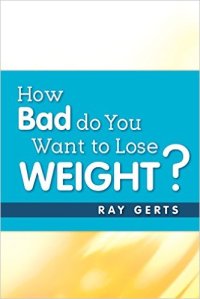The question everyone wants the answer to, is "how will Yoga help me?" If you have a weight problem, yoga will help you burn more calories. In general, yoga will help your body work better. Any problems you have, stress, hypertension, excess body fat, sleeping better can all be improved with yoga. It will help your body function better.
Every physical problem you have will be helped by doing Yoga everyday. I wrote the other day about walking and walking is the best for losing weight, but even if walking is your exercise of choose, you need to stay limber and work those other muscles and joints. Doing Yoga will help you feel better and sleep better. You'll be working the other parts of your body that seldom are used. Remember that you have hundreds of muscles and if you don't try and work them you'll lose them. Why do you think the elderly have so many physical problems. Falling is one of seniors biggest worries. If you don't strengthen your muscles, they will lose strength and you become weak and can't maintain your balance. Yoga will help you with that.
How It Works
Workout fads come and go, but virtually no other exercise program is as enduring as yoga. It's been around for more than 5,000 years.
Yoga does more than burn calories and tone muscles. It's a total mind-body workout that combines strengthening and stretching poses with deep breathing and meditation or relaxation.
There are more than 100 different forms of yoga. Some are fast-paced and intense. Others are gentle and relaxing.
Examples of different yoga forms include:
Hatha. The form most often associated with yoga, it combines a series of basic movements with breathing.
Vinyasa. A series of poses that flow smoothly into one another.
Power. A faster, higher-intensity practice that builds muscle.
Power. A faster, higher-intensity practice that builds muscle.
Ashtanga. A series of poses, combined with a special breathing technique.
Bikram. Also known as "hot yoga," it's a series of 26 challenging poses performed in a room heated to a high temperature.
Iyengar. A type of yoga that uses props like blocks, straps, and chairs to help you move your body into the proper alignment.
Intensity Level: Varies with Type
The intensity of your yoga workout depends on which form of yoga you choose. Techniques like hatha and iyengar yoga are gentle and slow. Bikram and power yoga are faster and more challenging.
Areas It Targets
Core: Yes. There are yoga poses to target just about every core muscle. Want to tighten those love handles? Then prop yourself up on one arm and do a side plank. To really burn out the middle of your abs, you can do boat pose, in which you balance on your "sit bones" (the bony prominences at the base of your pelvic bones) and hold your legs up in the air.
Arms: Yes. With yoga, you don't build arm strength with free weights or machines, but with the weight of your own body. Some poses, like the plank, spread your weight equally between your arms and legs. Others, like the crane and crow poses, challenge your arms even more by making them support your full body weight.
Legs: Yes. Yoga poses work all sides of the legs, including your quadriceps, hips, and thighs.
Glutes: Yes. Yoga squats, bridges, and warrior poses involve deep knee bends, which give you a more sculpted rear.
Back: Yes. Moves like downward-facing dog, child's pose, and cat/cow give your back muscles a good stretch. It's no wonder that research finds yoga may be good for relieving a sore back.
Type
Flexibility: Yes. Yoga poses stretch your muscles and increase your range of motion. With regular practice, they'll improve your flexibility. Very important for seniors.
Aerobic: No. Yoga isn't considered aerobic exercise, but the more athletic varieties, like power yoga, will make you sweat. And even though yoga is not aerobic, some research finds it can be just as good as aerobic exercise for improving health.
Strength: Yes. It takes a lot of strength to hold your body in a balanced pose. Regular practice will strengthen the muscles of your arms, back, legs, and core.
Low-Impact: Yes. Although yoga will give you a full-body workout, it won't put any impact on your joints. Also good for seniors.
Sport: No. Yoga is not competitive. Focus on your own practice and don't compare yourself to other people in your class. Even though beginner classes are the most popular you will see many people there who are more skilled then you. These people show up not to learn Yoga, they come for the class because it's convenient. It's not easy to find advanced classes. Don't worry about not fitting in, if you do Yoga every day it only takes a few weeks and you'll feel like a pro. Don't think you have to buy those tight fitting Yoga clothes; what works best are every baggy, silky top and pants that give you a lot of room and let you move freely. Some people wear baggy scrubs like the nurses use.
If you really want to lose your body fat than look for my Ebook at the websites listed below. You'll get information on Healthy eating, exercise, and diet.
“How Bad Do You Want To Lose Weight?”, is available at all the online bookstores selling for $1.99. Go to any of the websites and search the title to find my Ebook. This book gives you all you need to lose weight without spending money on gym memberships, diet plans or meal plans. Look for my book. at Amazon.com, B&N.com, iBooks, Kobo.com, Scribd.com, or Gardner Books in the U.K.



/about/Stocksy_woman-holding-green-drink_Medium_945404-5811136c5f9b58564c75e49a.jpg)

